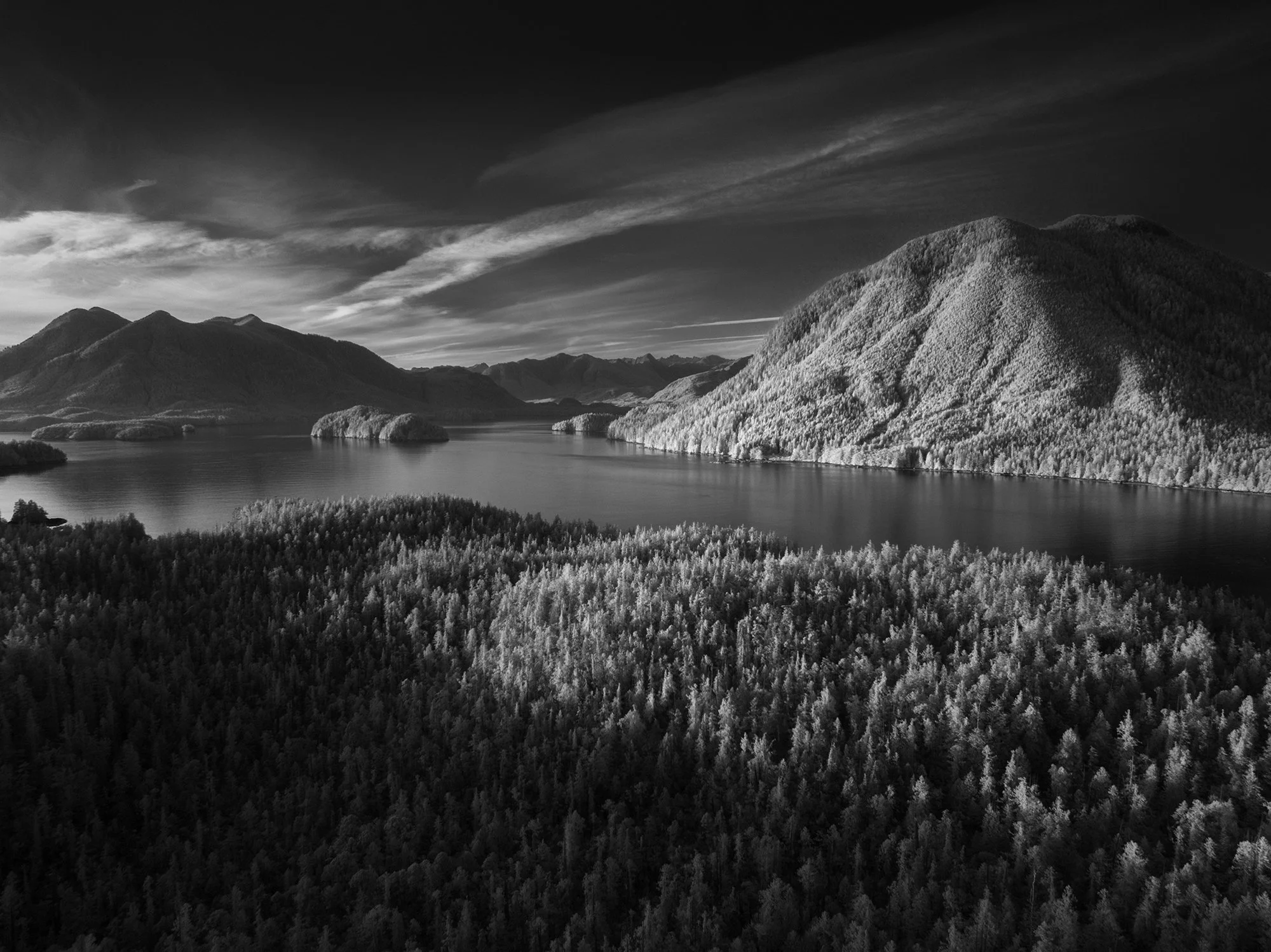COASTAL NORTHWEST
BELLA COOLA - CLAYOQUOT SOUND - HAIDA GWAII
EXHIBITION IN 2026
STAND is a reverential body of infrared photography visiting landscapes that are standing monuments to those have cultivated and protected them for over 10,000 years.
This project respectfully honours and acknowledges the unceded territories of the Haida, Nuxalk, and Tla-o-qui-aht First Nations that they have stewarded for millennia.
CONSERVATION HISTORY
In these regions, there are multiple stories of First Nations people standing against unsustainable colonial logging practices in the 1980’s-2000’s. These practices are one of countless affronts to their culture, and sovereignty, and threaten not just the health of the land but the long-term security of their culture.
STATUS
From my explorations in British Columbia, I have started to work on a larger body of work titled “STAND.” I’m currently seeking funding to finish photographing this region in 2025 in preparation for the exhibition.
THIS PROJECT WORKS IN COLLABORATION AND ALLYSHIP WITH
I HAIDA GWAII
Athlii Gwaii (Lyell Island)
In early 2024, nearly 40 years after the First Nations blockade (1985), British Columbia transferred the title over more than 200 islands off Canada’s west coast to the Haida people, recognizing the nation’s aboriginal land title throughout Haida Gwaii.
II BELLA COOLA
Nuxalknalus (King Island)
The blockades led by the Nuxalk Nation starting in 1995 at ISTA on Nuxalknaul (King Island) and became part of an international environmental campaign which was coined The Great Bear Rainforest Campaign. The campaign efforts contributed to the introduction of ecosystem-based management for the broader region.
III CLAYOQUOT SOUND
Wanachus-Hilthuuis (Meares Island)
Starting in 1993, protests led by the Tla-o-qui-aht people and other Nuu-chah-nulth nations became know as the “War In The Woods”. They resulted in halting industrial logging on Wanachus-Hilthuuis, protecting their a major water source and ancient red cedar forests. The successes of these protests and other independent actions led to the formation of The UNESCO Clayoquot Sound Biological Reserve.
THE WORLD’S LARGEST
COASTAL TEMPERATE
RAINFOREST
The forests of the Emerald Edge sequester more than 300 million tons of carbon per year
Spanning Alaska, British Columbia, Washington state and Oregon—with over 100 million acres of lush forest, rivers, islands and mountain streams. It encompasses more than 100 million acres of coastal rainforest, thousands of rivers and salmon streams, 40,000 islands and 35,000 miles of coastline. The Emerald Edge sustains hundreds of communities and thousands of species of flora and fauna—including bears, salmon, wolves and whales—and thanks to its immense carbon-storage capacity, plays a critical role in regulating the global climate.
For millennia, Indigenous First Nations, Alaska Natives and coastal Tribes have called this region home, relying on the lands and waters for traditional practices, fishing and other cultural and economic uses. These original stewards’ cultures, languages and livelihoods were born from the landscape and to this day—and for generations to come—they maintain a vibrant and strong connection to the lands and waters.
Unsustainable natural resource use has been the default in many parts of the Emerald Edge, which has led to conflict between communities, environmental groups and extractive industries.
SOURCE
“The Power of North America’s Emerald Edge”
The Nature Conservancy
LINK TO ARTICLE
“Protest Against Interfor on Nuxalknalus”
Nuxalk Smayusta
LINK TO ARTICLE
PROJECT SUPPORTERS
Direct Supporters
Kristin Lash
Caroline & Terry Merrill
Pete Nenortas
Nick Rofe
David Sywaski
Indiegogo Supporters
Mazie Bartels-Biswell
Marc Bartholomew
Adam Burk
Mark Jamra
Heather Kahn
Kristin Lash
Zeus Markos
Lynne Nichols
Andrea Nilosek
Ryan Richards
Joanne Stamplis
Sarah Warshaw
Richard Wexler
William Whalen
SPONSORED BY
THIS EXHIBITION NEEDS YOUR HELP
In order to complete the creation of photographs this project needs to revisit Bella Coola, BC in 2025! PLEASE CONSIDER FUNDING this project to make it possible to create the prints needed for an exhibition in 2026.
YOU CAN
HELP BY
PLEASE SUPPORT THIS PROJECT BY DONATING BELOW
Funds go to help cover the cost of transportation, lodging, and local guide hires.


















